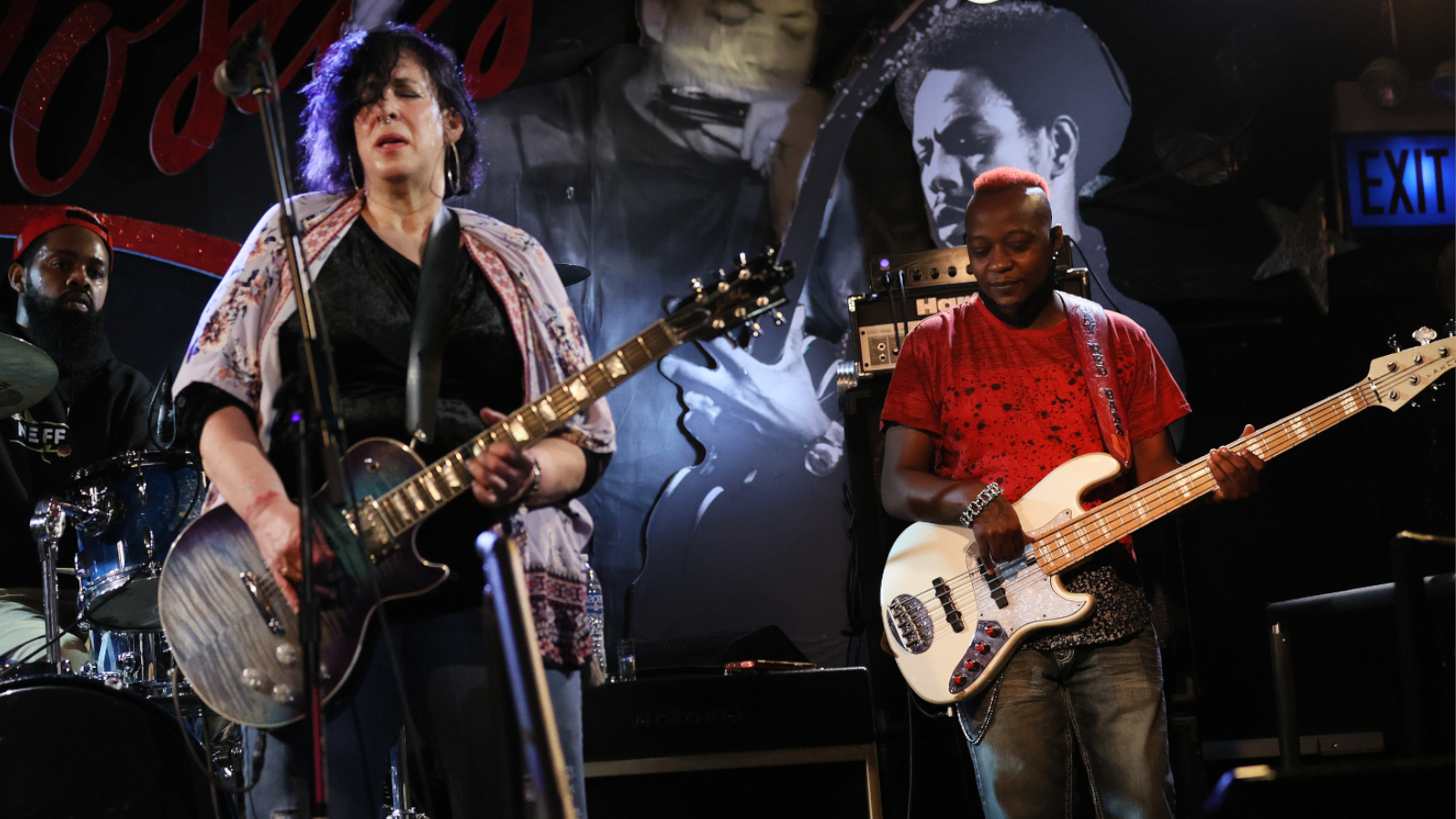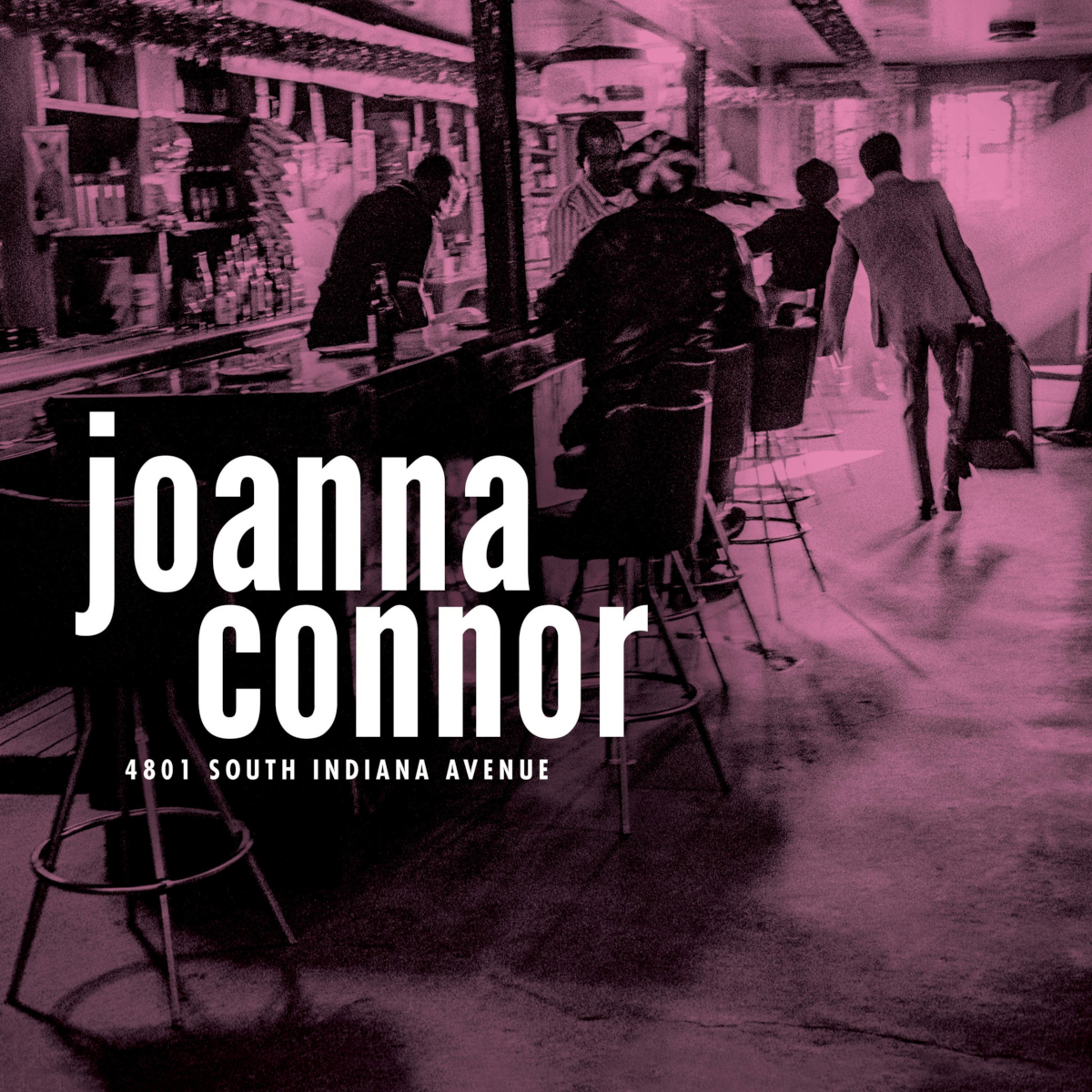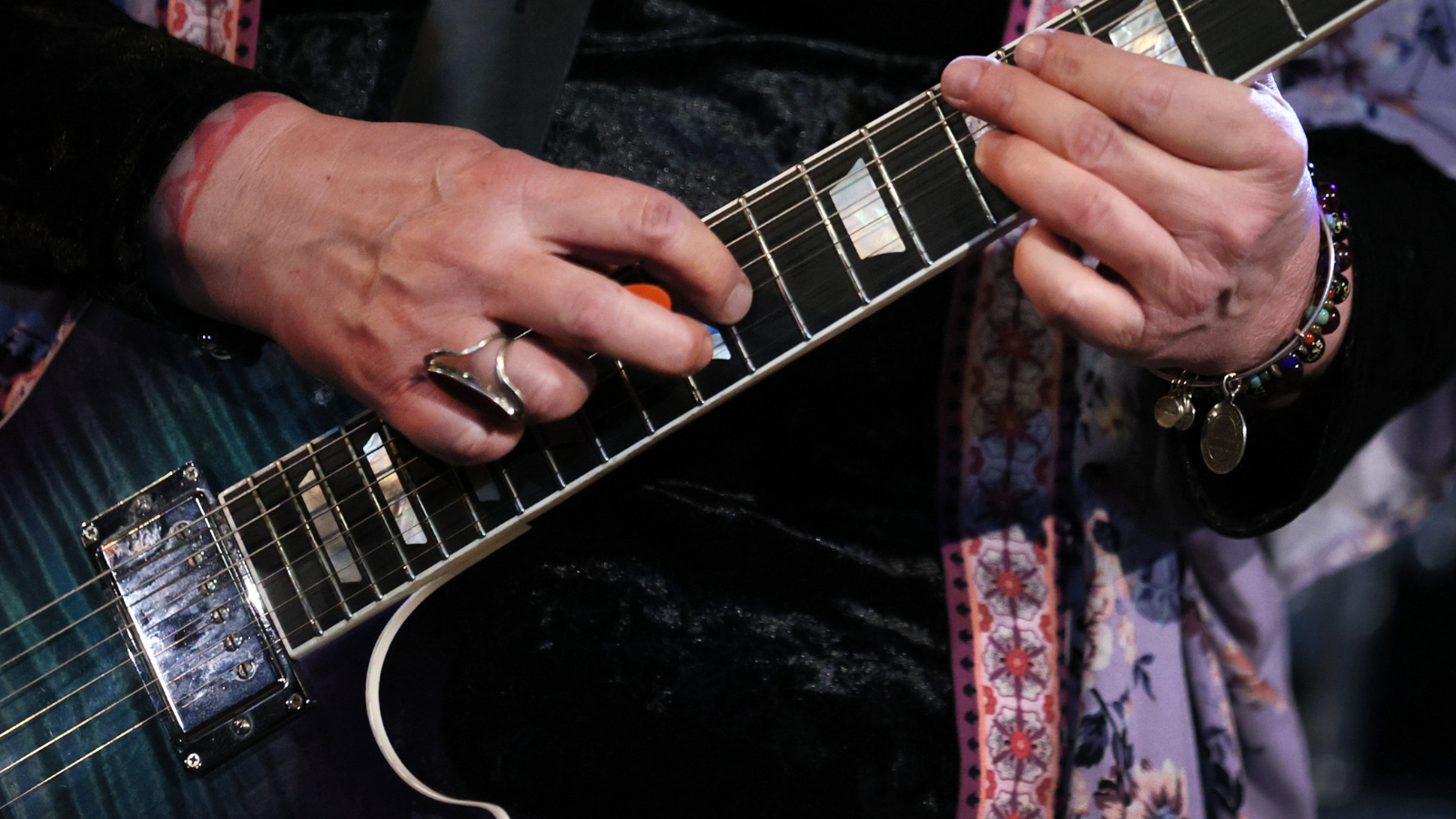
Joanna Connor came up in the tough and competitive 1980s Chicago blues scene.
Her 1989 debut album, Believe It, hit the community like a hurricane and quickly established her as one of the top blues slide guitarists in the world.
At the time, you could count female blues players on one hand, Bonnie Raitt being the most well known. Unlike Raitt, Connor was a shredder who played with as much aggression and technique as most of the dudes.
She’s spent the past decades playing close to home and raising her kids while tending to a residency at Kingston Mines, one of the most popular and well-attended gigs in the Windy City.
Connor’s latest album, 4801 South Indiana Avenue is out on Joe Bonamassa’s KTBA Records.

You have the image of someone who’s really tough.
It’s because of the way I play. I’ve had to be tough to a certain point. I’m not a girly girl – I’ve never been. I’ve always been a tomboy, and I still am. You have to see me play. It’s just the way I feel when I do it.
And the Chicago scene, well, that’s a whole culture unto itself. You had to be tough to play there. You had to be streetwise to a certain degree. It was hard.
I wasn’t intimidated by anything. I was just determined
Joanna Connor
Were you intimidated walking into that scene?
I wasn’t intimidated by anything. I was just determined. I like Zeppelin, Buddy Guy and all these really heavy-duty cats.
When I was a kid, I was into sports, and I used to want to be a baseball player. I was shocked when I learned girls couldn’t play in the major leagues. I thought girls got the short end of the stick, so I just made up my mind that if there was something I wanted to do, I was going to do it and no one was going to stop me.
My mom was pretty radical – she’s the reason. She brought music into the house. She took me to see blues and reggae and rock when I was a real little kid, and she was into women’s liberation. So she was always telling me to do my own thing.

Tell me about your rig.
For my amp, I use either a Roland JC-120, a Peavey Chorus 400 from the early ’80s or a Victoria Cherry Bomb.
My pedals are simple: Boss Blues Driver, Boss Super Chorus and MXR Carbon Copy Analog Delay.
I still mainly use my trusty 1990 Les Paul Classic 60 reissue and a Dean Performer E acoustic-electric. I also use a Mexican-made Fender Strat.
A lot of the older guys are gone, so the new generation has taken over
Joanna Connor
Do you practice?
I don’t practice a lot, but I kind of analyze my playing a lot more now. Something just happened with my ear and the way I see the guitar neck. I listen to a lot of fusion and different things now, and I feel more confident in my playing.
You felt you had to prove yourself in your early days. How are things now?
I felt that way for years. It took me about 15 years to get respect. I’ve pretty much played with everybody, so I’m kind of established now, and a lot of the older guys are gone, so the new generation has taken over.
In Chicago, everybody knows me, and I’ve gotten to the level to where they just go, “That’s Joanna. She can play.”
I don’t have that, “Oh, I want everybody to love me” feeling. It’s more like, “Okay, now it’s time to kick some ass!”
For more information on Joanna Connor, visit joannaconnorwreckingcrew.com.
Get The Pick Newsletter
All the latest guitar news, interviews, lessons, reviews, deals and more, direct to your inbox!
"Why can't we have more Django Reinhardts going, 'F*** everybody. I'll turn up when I feel like turning up'?" Happy birthday to Ritchie Blackmore. The guitar legend looks back on his career in an interview from our December 1996 issue
"Get off the stage!" The time Carlos Santana picked a fight with Kiss bassist Gene Simmons and caused one of the guitar world's strangest feuds









